Our convoy was ten coach buses long as we left Dorasan and already murmurs of excitement could be heard from the Korean-speaking passengers aboard. For many of us, the day had begun at four o’clock in the morning but sleep was the last thing on my mind as military vehicles took their places in front of, behind, and within our convoy. As we approached the fortified barrier of the demilitarized zone (or DMZ) it pained me not to be taking any photos – but the rules had been made clear, photos were only allowed at certain points, and in order to take part in this experiment, I would need to respect that. Heavily armed soldiers stopped us long enough to open the barrier and soon we were crossing through the most heavily guarded border on earth. Suddenly the harsh, barbwire laden, soldier-lined world of the southern frontier gave way to the pristine untouched nature of the DMZ – making for a stunning contrast. Without even slowing down our escort vehicles pulled away and executed u-turns returning them to Dorasan. Mere seconds later military jeeps came into view from the other direction executing similar u-turns and falling in line perfectly on all sides of our convoy. Witnessing the precision of the handoff – knowing that these two bitter enemies never even exchanged words of coordination – was simply chilling. Although we would not arrive at the opposing transit station for a few more minutes, we were now officially under the care of the North Korean army.
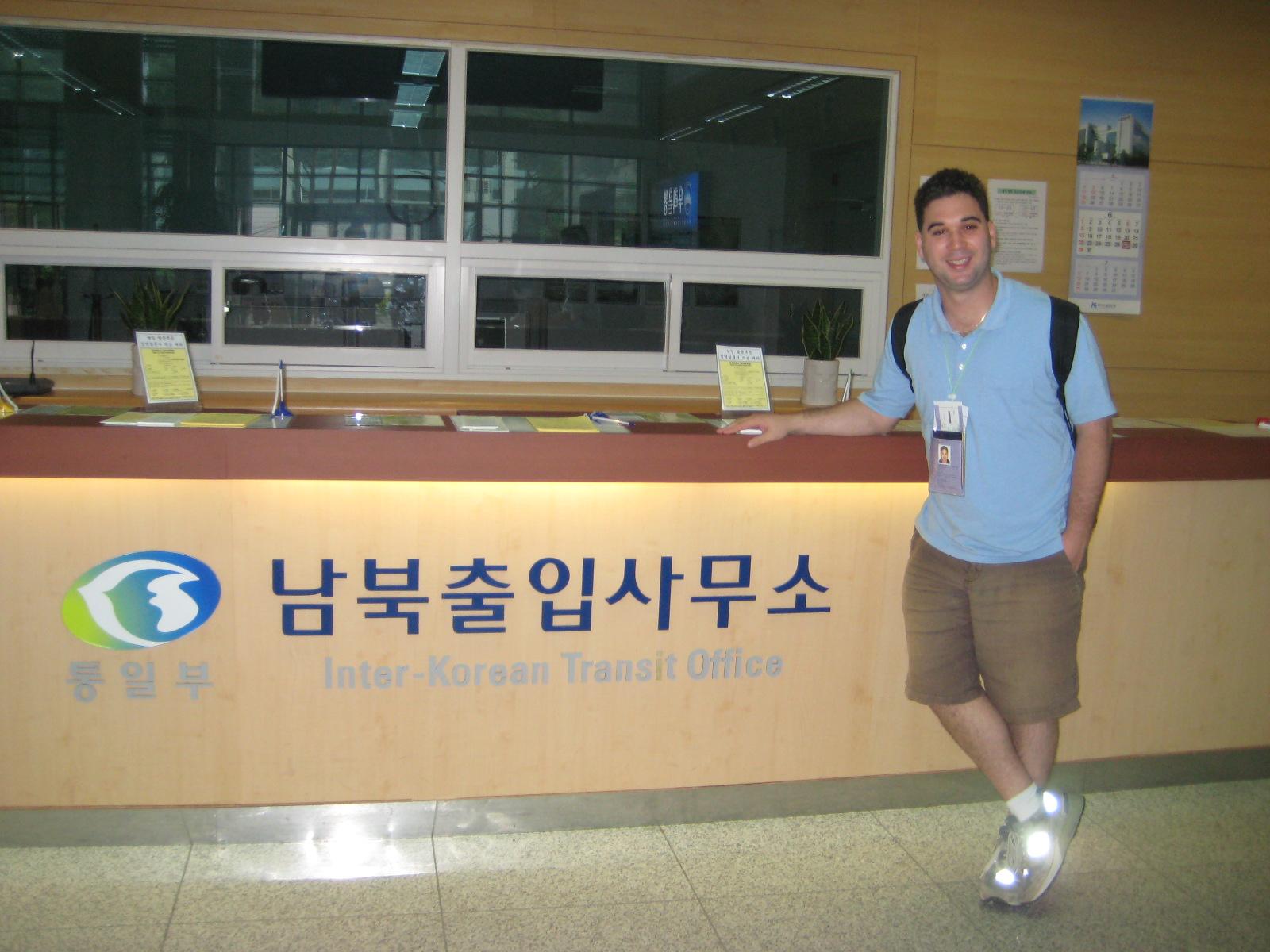
Here’s something you probably didn’t know exists. The “Inter-Korean Transit Office”. A government department of South Korea that specifically handles dealing with the North. Don’t worry, they hate their jobs.
You may be surprised to learn that how I, a white American, came to visit the hermit nation was through no special circumstances or anomalies in immigration regulations. In fact what made this all possible actually began a number of years ago when South Korea had become so rich they realized that it was no longer affordable for them to manufacture within their own country. The obvious choices would be to relocate manufacturing to places like Vietnam or China, but a more desirable option lay just a few miles to the north. The South began a deal with the North to build a city of factories in a place called Kaesong. In turn, the North would staff the factories with North Koreans which could be paid less than any workforce in Asia. Besides taxing their workers at 70%, the North would benefit from the huge influx of cash and added infrastructure. The South, on the other hand, would solve their manufacturing needs with a work force that already spoke the same language, shared a culture and was just an hour or so up the road from Seoul. The budding inter-Korean relationship also allowed for special government sponsored day-tours of Kaesong from Seoul which is how I came to put my name on a month-long waiting list for permission to participate.

It’s kind of hard to define items that could cause harm to the National Constitution, national security, public order or customs of local people. Does my iPod qualify?
Besides the obvious impressions of North Korea that we all get from the media, I knew little of what to expect after crossing that border. What I found however was that I had seemed to have stumbled 50 years into the past. The world passing by outside the windows was not the world I had left behind in Seoul, or New York. Here it was still 1953 and unlike other developing nations I have visited, the people here had no idea what was going on in the rest of the world. We were expressly forbidden from bringing any recording devices or mobile phones but also from bringing any newspapers, magazines or books that may paint a picture of the world outside. The license plates on our buses were covered up so that North Koreans wouldn’t make any assumptions regarding the wealth of the South. Buildings, construction equipment, and cars all had an ancient soviet feel to them and despite the bitter cold winters in this region; windows only had single pane non-tempered glass – the type you’d see in really old colonial era buildings that reflects kind of funny in the sunlight. In fact, as I looked out at a landscape dotted with North Korean farms there were no signs of modern society here at all.
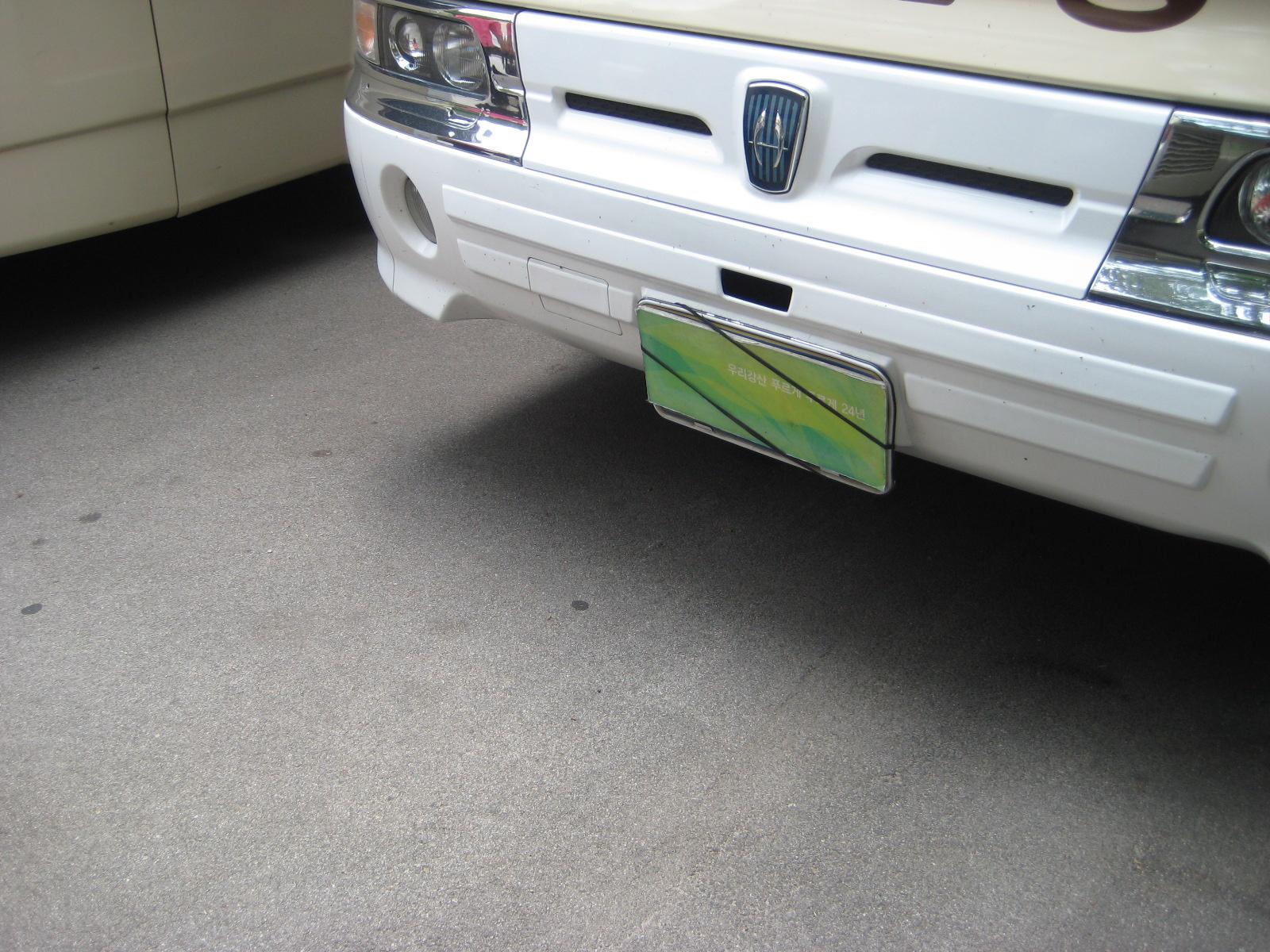
What’s under that? It’s definitely not a South Korean license place. It definitely does not imply that people in South Korea can afford giant awesome buses instead of mule-drawn carts.
As our massive convoy made its way from site to site we noticed an obvious lack of other vehicles on the road. In fact, throughout the entire day I didn’t see a single other car on the roads – not one. Could the government really be clearing all roads for our passage? There was something else even more noticeable that came up whenever we would pass through an occupied area. Before we would arrive anywhere advance teams would go into a village, farm, town or cultural site and move everybody out. Imagine driving past a village. Buildings, structures, gardens and farms spread out in all directions as we pass through the center. It’s the middle of the day, smoke is rising from chimneys, animals are walking about and you expect to see people everywhere going about their daily chores. Instead, we’d see a lone North Korean soldier in full dress uniform standing at attention in the center of everything saluting our escort vehicles. Sometimes we would pass a farming area where there would be a small group of North Koreans working down the end of a dirt path. Without fail, closer to us on the same dirt path would be a soldier frozen at attention in a permanent salute. It quickly became clear that us driving through North Korea was a much bigger deal then we had originally thought. It was more then just the military motorcade and government officials on our bus, everywhere we went was prepped for us before we arrived – white washed so that the North Korean government could control what we were seeing. The soldiers weren’t working to protect us; they were making sure we stayed completely segregated from the populous. An incredible amount of effort was being expended to do all this and it made me wonder if they were more concerned about us talking to them, or them talking to us. As we continued throughout the day visiting sites, military personnel would guard the entrances and exists making sure nobody came in and nobody went out.
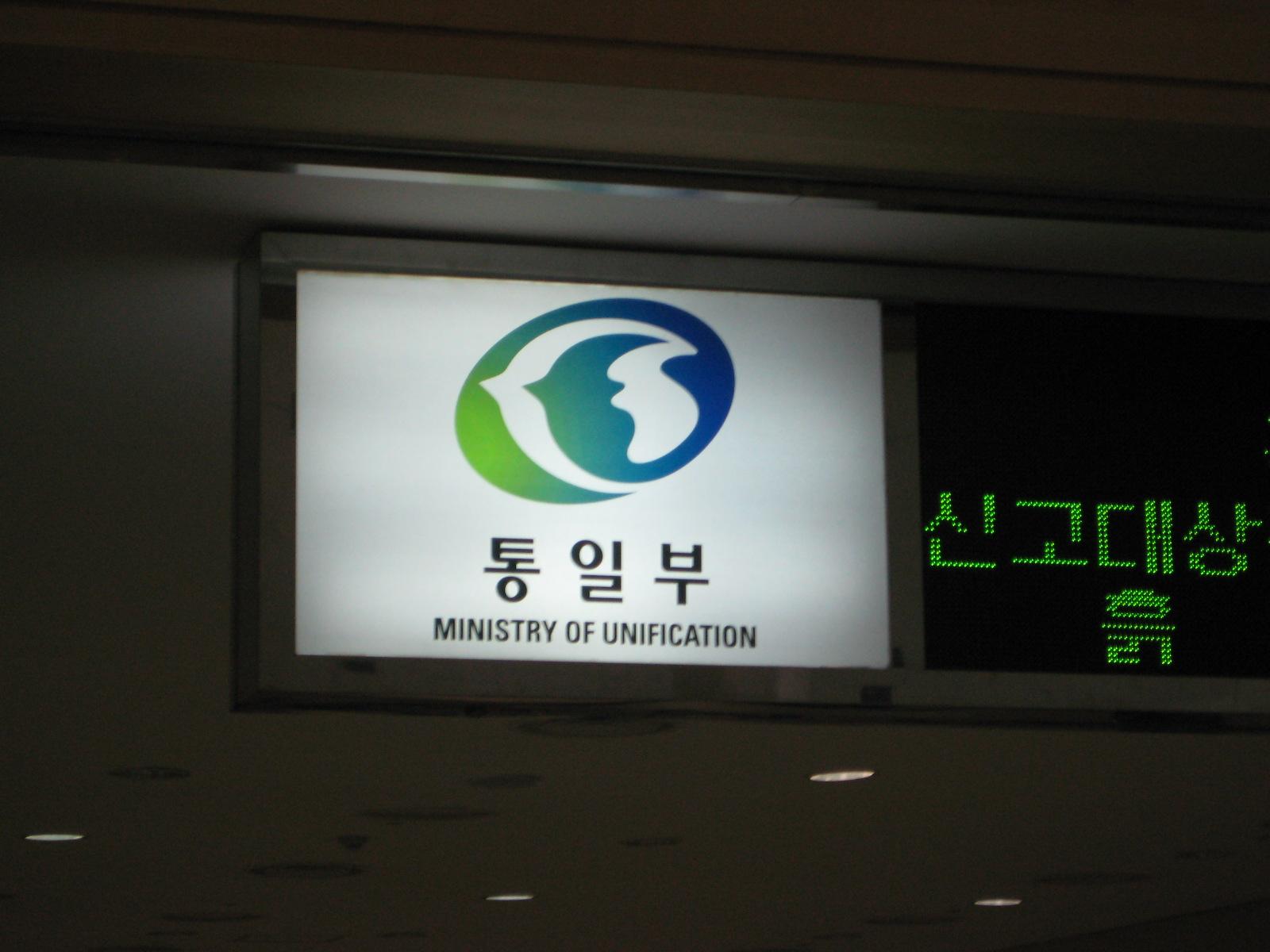
The Inter-Korean Transit Office is run by the Korean Ministry of Unification. As you can see their logo is a hybrid of a fish and “Goodnight Moon”.
The sites we visited throughout the day ranged from Bakyeon waterfall in the mountains to the home and school of a Korean hero called Sungyangseowon to Sunjukgyo bridge and the site of Korean loyalist Jeong Mong Ju’s murder to the Goryeo Museum in the city. Of the 400+ people in our convoy I was one of only two Caucasians with practically everyone else being South Koreans eager to get a glimpse of pieces of their history that had fallen on the wrong side of the line of demarcation so long ago. As we worked our way closer to the center of the city, our group ballooned to 15 buses with an even more expansive military escort that would walk the street ensuring absolutely no contact between us and the citizenry.
Besides cultural sites, we were treated to a very traditional Korean lunch at the Folk Culture Hotel (which had also been completely cleared out for us) and given the opportunity to buy gifts in several small shops. The interesting part about the gift shops is that they would only accept US dollars. I paid with a twenty dollar bill I just happened to have and was given change in dollars as well – the crispest, wholly uncirculated bills you can imagine. I friend of mine later explained to me that North Korea is notorious for counterfeiting American currency and have been known to mint their own to flood the market. I don’t know if there is any truth to that, but I can’t imagine the US Mint is selling uncirculated $1 bills to North Korea either.
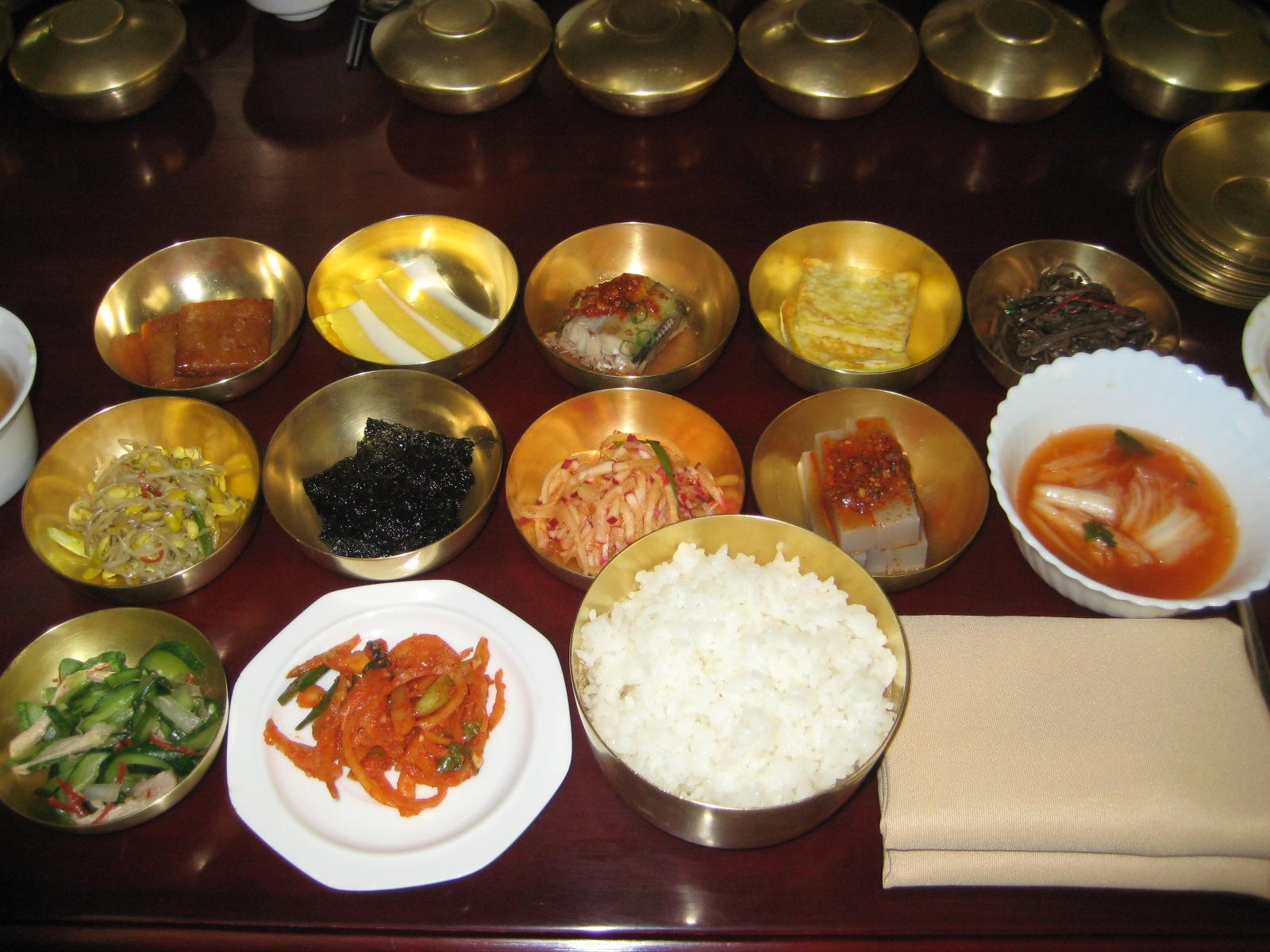
Unlike all the Koreans I was traveling with, I have no idea what any of this Korean food is. Although I’m pretty sure that white one is rice.
Leaving North Korea immigration was quick and efficient on both sides. North Korean officials conducted random camera checks and I saw several people have select “prohibited” photos deleted. As we headed back to Seoul I looked forward to watching the North/South handoff of our convoy again but was so exhausted I fell asleep after leaving the North’s immigration and woke up what felt like seconds later at the South’s. I had hoped that my glimpse into the “axis of evil” would answer questions for me but in fact it had just raised more. Seeing a culture first hand that was so fundamentally different then my own made me anxious to learn more about the relationship between the two countries and just how sustainable that relationship is. On the surface this ongoing cooperation in manufacturing and now tourism seem like positive steps towards reunification – however it seems that the more the two countries profit based on the disparity between them, the less likely reunification may actually be. In fact only time will tell if the half-century old conflict between these two enemies will ever wane. Until then, I am grateful for the opportunity to have experienced and begun to understand it first hand.

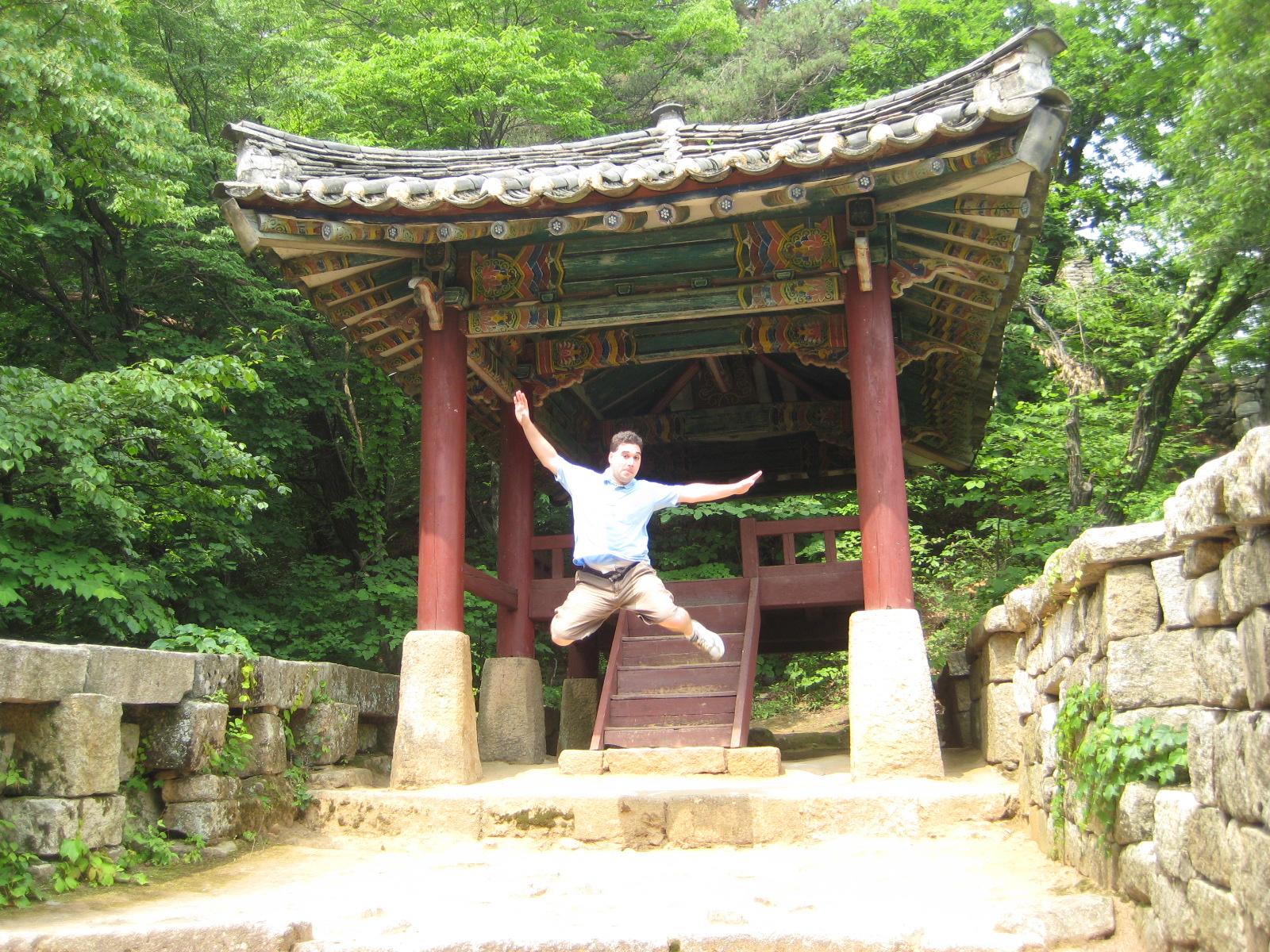










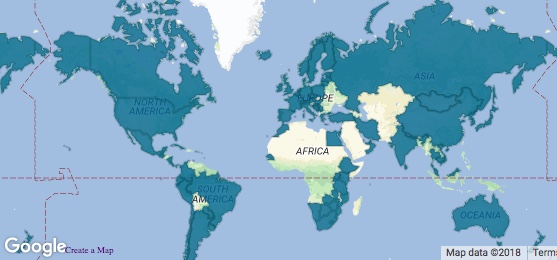



Awesome!
Jumping for joy isn’t illegal in North Korea? You could have been shot!
It may have been! I took my chances with nobody around 🙂